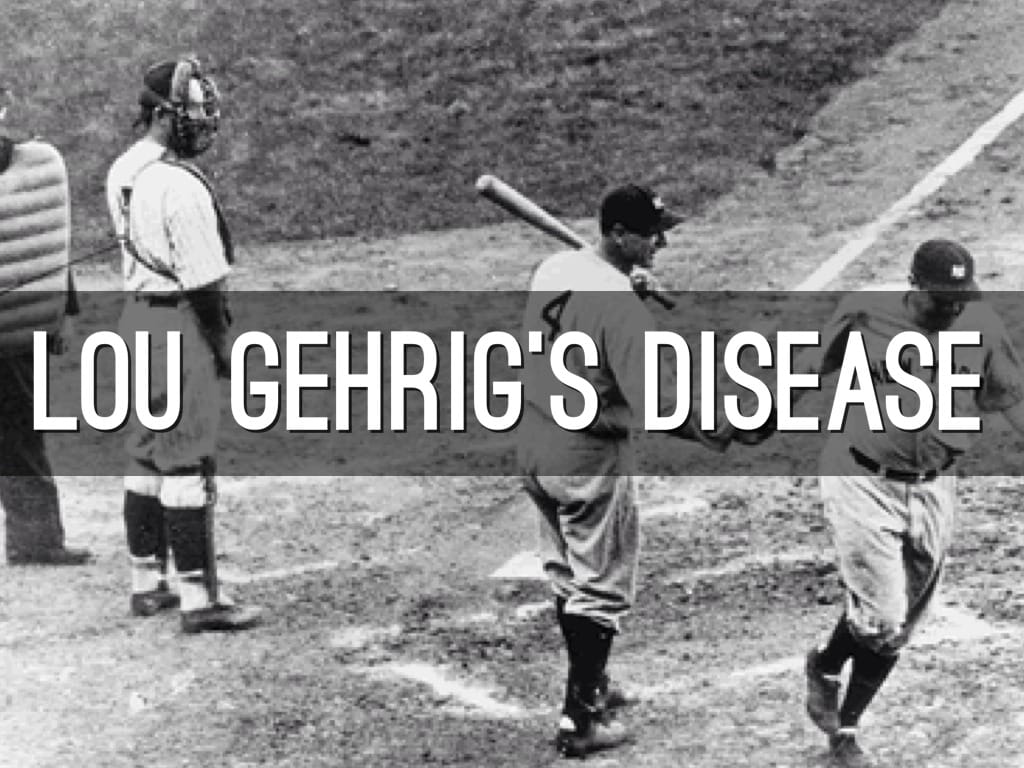Lou Gehrig, the “Iron Horse” of baseball, tragically made ALS a household name. However, his story is just one among many. This disease affects individuals from all walks of life, including numerous prominent figures who have bravely faced its challenges. This article explores the lives and legacies of these remarkable individuals, highlighting the diverse impact of ALS and the critical need for continued research and support.
Who Are Some Notable Figures Who Battled ALS?
ALS, or amyotrophic lateral sclerosis, is a progressive neurodegenerative disease that gradually diminishes muscle control, impacting essential bodily functions. Let’s take a closer look at some well-known individuals who courageously confronted this challenging disease.
Beyond the Ballpark: Recognizing the Diverse Faces of ALS
While Lou Gehrig’s name is inextricably linked to ALS, it’s crucial to recognize the diverse range of individuals who have also faced this disease. From brilliant scientists to celebrated artists and influential political figures, ALS does not discriminate.
Stephen Hawking, the renowned physicist, stands as a symbol of resilience. Diagnosed in his early twenties with a slow-progressing form of ALS, he defied expectations, living a full and productive life for over five decades. His groundbreaking work on black holes and the universe revolutionized our understanding of cosmology. Hawking’s ability to transcend physical limitations and achieve remarkable intellectual feats serves as an inspiration to us all.
Jon Stone, one of the creative forces behind Sesame Street, also battled ALS. His contributions to children’s entertainment brought joy and laughter to generations. Stone’s story reminds us that ALS can affect anyone, even those who dedicate their lives to bringing happiness to others.
Paul Cellucci, former Governor of Massachusetts, turned his personal experience with ALS into a mission of advocacy. After his political career, he dedicated his time to raising awareness and supporting research efforts. Cellucci’s commitment underscores the importance of turning personal struggles into opportunities for positive change.
From the boxing ring to the silver screen, ALS has touched individuals known for their physical prowess and artistic talent. Ezzard Charles, a world champion boxer, and Linda Carlson, a talented actress, both faced the challenges of ALS. Their stories demonstrate the disease’s indiscriminate reach, affecting individuals regardless of their background or profession. Huddie Ledbetter, the iconic musician known as Lead Belly, and German General Friedrich Paulus, a prominent figure in World War II, also grappled with ALS, further illustrating its wide-ranging impact.
The Ripple Effect: Raising Awareness and Inspiring Action
The stories of these public figures have played a crucial role in raising awareness about ALS. The highly successful Ice Bucket Challenge, which went viral on social media, generated significant funds for research and brought ALS to the forefront of public conversation. Many celebrities and their families have become vocal advocates, establishing foundations and actively supporting research initiatives. Their efforts have been invaluable in promoting understanding, inspiring hope, and driving progress in the fight against ALS.
| Public Figure | Known For |
|---|---|
| Stephen Hawking | Physicist |
| Lou Gehrig | Baseball Player |
| Paul Cellucci | Politician |
| Jon Stone | Sesame Street Creator |
| Ezzard Charles | Boxer |
| Linda Carlson | Actress |
| Lead Belly | Musician |
| Friedrich Paulus | German General |
This table, while not exhaustive, represents the diverse backgrounds of individuals who have faced ALS, emphasizing the disease’s universal reach.
Who Is the Most Famous Person with ALS?
While many notable figures have battled ALS, Stephen Hawking and Lou Gehrig are perhaps the most widely recognized. Their stories have significantly shaped public perception of the disease and inspired countless individuals.
Stephen Hawking: A Legacy of Resilience
Stephen Hawking’s remarkable journey with ALS is a testament to the human spirit’s ability to triumph over adversity. Diagnosed in the 1960s, he was initially given only a few years to live. Yet, he defied the odds, living for over five decades and achieving extraordinary scientific accomplishments. Confined to a wheelchair and communicating through a computerized voice system, Hawking explored the mysteries of the universe, authoring the best-selling book A Brief History of Time. His life and work symbolize the power of the human intellect to transcend even the most daunting physical limitations.
Lou Gehrig: The Name Behind the Disease
Lou Gehrig, the “Iron Horse” of baseball, became tragically linked to ALS following his diagnosis in 1939. His sudden decline from peak athletic form to debilitating illness shocked the nation. Gehrig’s poignant farewell speech at Yankee Stadium, where he declared himself “the luckiest man on the face of the earth,” became a defining moment in sports history. The disease subsequently became commonly known as Lou Gehrig’s disease, forever associating his name with ALS awareness.
Beyond the Icons: ALS Affects Everyone
While Hawking and Gehrig brought significant attention to ALS, it’s essential to remember that the disease affects individuals from all backgrounds. Roberta Flack, the renowned singer-songwriter, and Dennis Day, a beloved actor, both battled ALS, underscoring the disease’s indiscriminate nature. Their stories, along with countless others, remind us that ALS can impact anyone, regardless of their profession or level of fame.
The Unpredictable Nature of ALS
The contrasting experiences of individuals with ALS highlight the disease’s variable progression. Stephen Hawking’s long life with ALS stands in stark contrast to Lou Gehrig’s much shorter battle. This variability likely stems from a combination of genetic factors, the specific type of ALS, and access to care. Understanding these individual differences is crucial for developing personalized treatment strategies.
The Ongoing Search for Treatments and a Cure
Despite the challenges, researchers are tirelessly working to find effective treatments and a cure for ALS. Progress is being made in understanding the underlying mechanisms of the disease, and clinical trials are exploring promising new therapies, including gene therapy and drug development. Increased awareness, fueled in part by the stories of prominent figures with ALS, continues to drive funding and support for vital research. While a definitive cure remains elusive, ongoing research offers hope for a future where ALS is no longer a devastating and incurable disease.
What Triggers Lou Gehrig’s Disease?
The exact cause of ALS remains a mystery, likely involving a complex interplay of genetic, environmental, and lifestyle factors.
Understanding ALS: A Progressive Neurodegenerative Disease
ALS, a progressive neurodegenerative disease, affects motor neurons – the nerve cells in the brain and spinal cord responsible for muscle control. As these neurons degenerate, the ability to control voluntary muscles diminishes, eventually leading to paralysis.
Exploring Potential Triggers
Genetics likely play a role in some cases of ALS. Around 5 to 10 percent of cases are considered familial, meaning the disease runs in families due to specific gene mutations. However, the vast majority of cases are sporadic, suggesting other factors are involved. Environmental factors, such as exposure to toxins or heavy metals, have been suggested as potential contributors, though more research is needed. Lifestyle factors, like diet and exercise, are also under investigation. Furthermore, age and sex appear to influence risk, with increasing age and male gender associated with higher likelihood of developing ALS.
The Search for Answers Continues
Research into the causes of ALS is ongoing, and scientists continue to explore various avenues, including oxidative stress, protein misfolding, and inflammation. While definitive answers remain elusive, this continuous pursuit of knowledge is crucial for developing more effective treatments and, ultimately, finding a cure.
Important Note: This article provides general information about potential ALS triggers. Consult with a healthcare professional for any concerns about your health or for personalized medical advice.
What Famous People Have Died of ALS?
ALS has claimed the lives of numerous individuals, including prominent figures who left indelible marks on their respective fields.
Remembering Those We’ve Lost
Lou Gehrig, the baseball legend, brought early attention to ALS following his diagnosis in 1939 and subsequent death in 1941. His legacy continues to raise awareness about the disease. Stephen Hawking, the brilliant physicist, defied the odds, living for 55 years after his diagnosis before succumbing to ALS complications. David Randolph Ames, a talented football player, also faced the challenges of ALS. Other notable figures, including boxer Ezzard Charles, basketball player George Yardley, actor David Niven, and actor Lane Smith, are believed to have died from ALS, though verifying cause of death for historical figures can be challenging.
The Ongoing Fight Against ALS
The stories of those lost to ALS underscore the urgent need for continued research and support. Organizations like the ALS Association play a vital role in funding research, providing resources for patients and their families, and raising awareness about the disease. The fight against ALS is a collective effort, and every contribution brings us closer to a future where this devastating disease is no longer a threat.
Escape to the breathtaking bayside sunset bar key largo and witness the vibrant hues of the Florida Keys sky while sipping on tropical cocktails. Indulge in the ultimate lakeside retreat with cozy big bear lakefront cabins nestled amidst the stunning scenery of Big Bear Lake.
- Jesus Bible: Discover Jesus’s Story Throughout Scripture - April 27, 2025
- Don Luis: Unraveling the 16th-Century Virginia Mystery - April 27, 2025
- Captain J’s Kauai Tours: Unforgettable Na Pali Coast Adventures - April 27, 2025
















